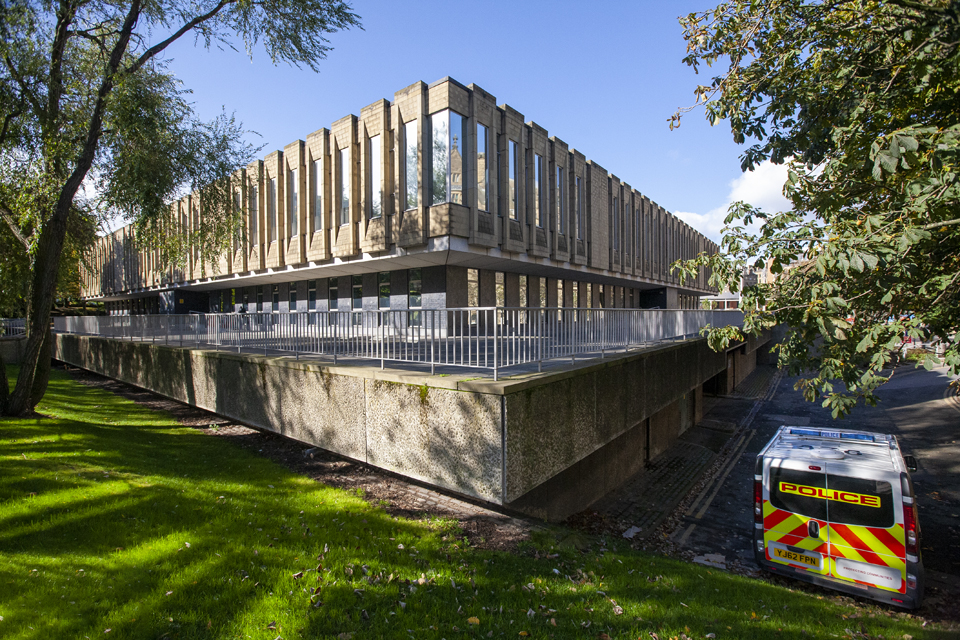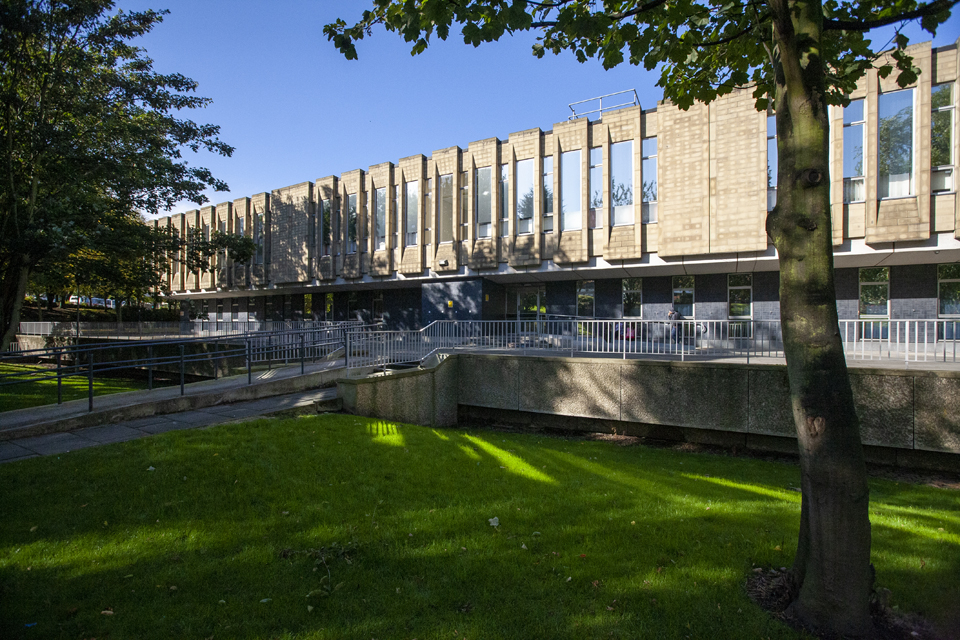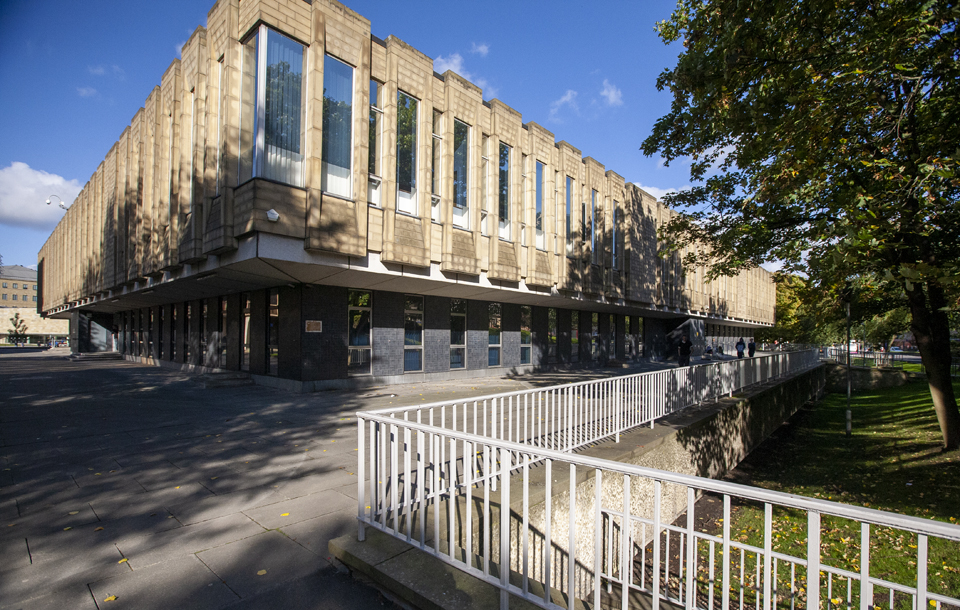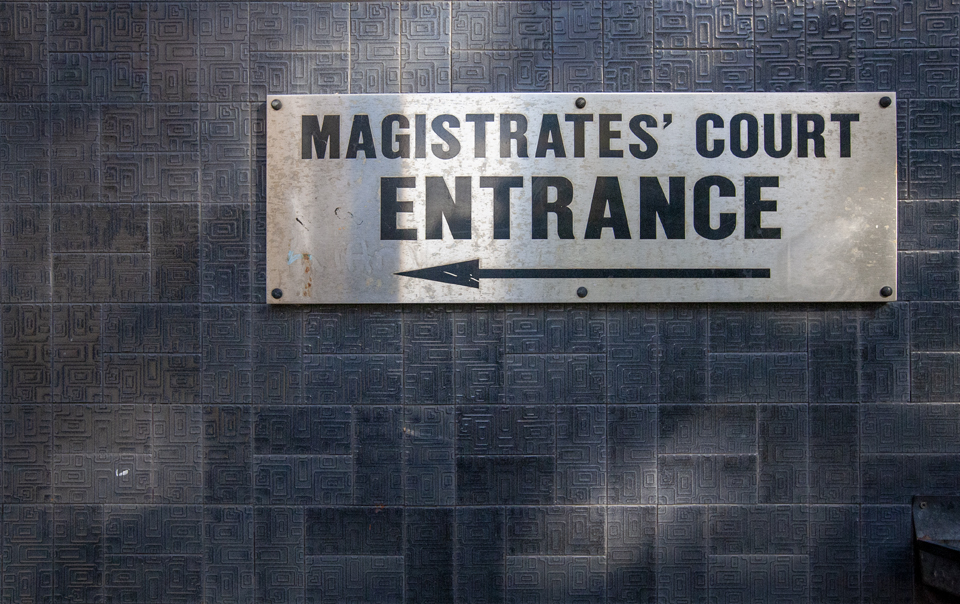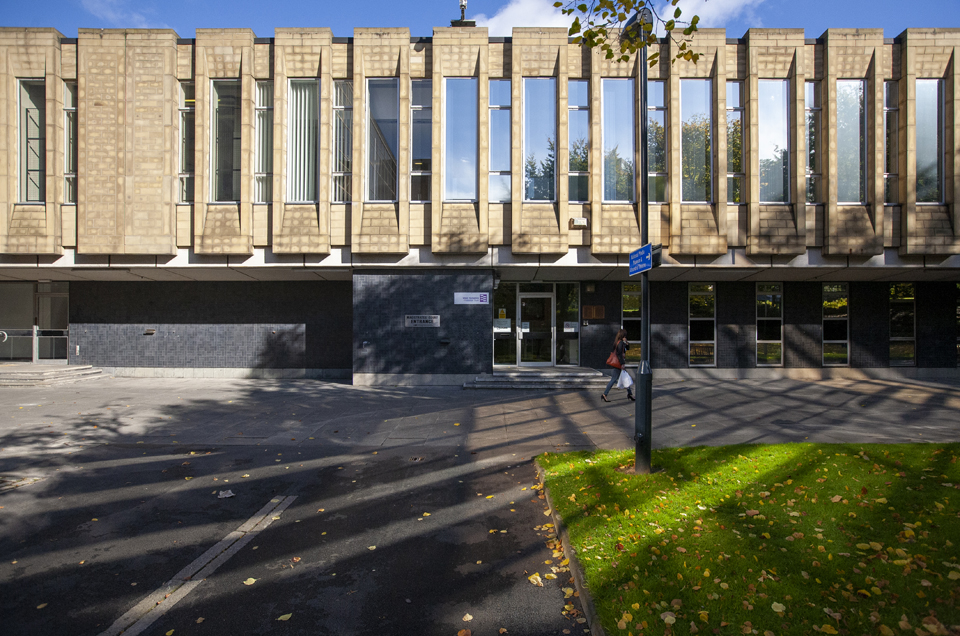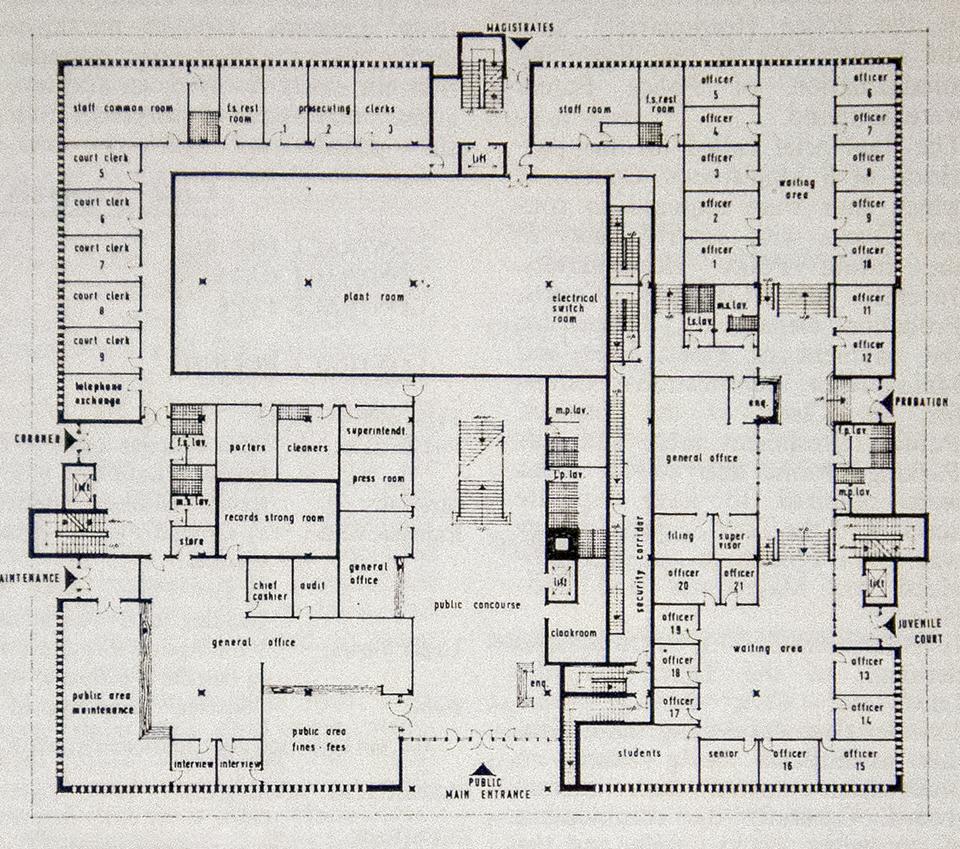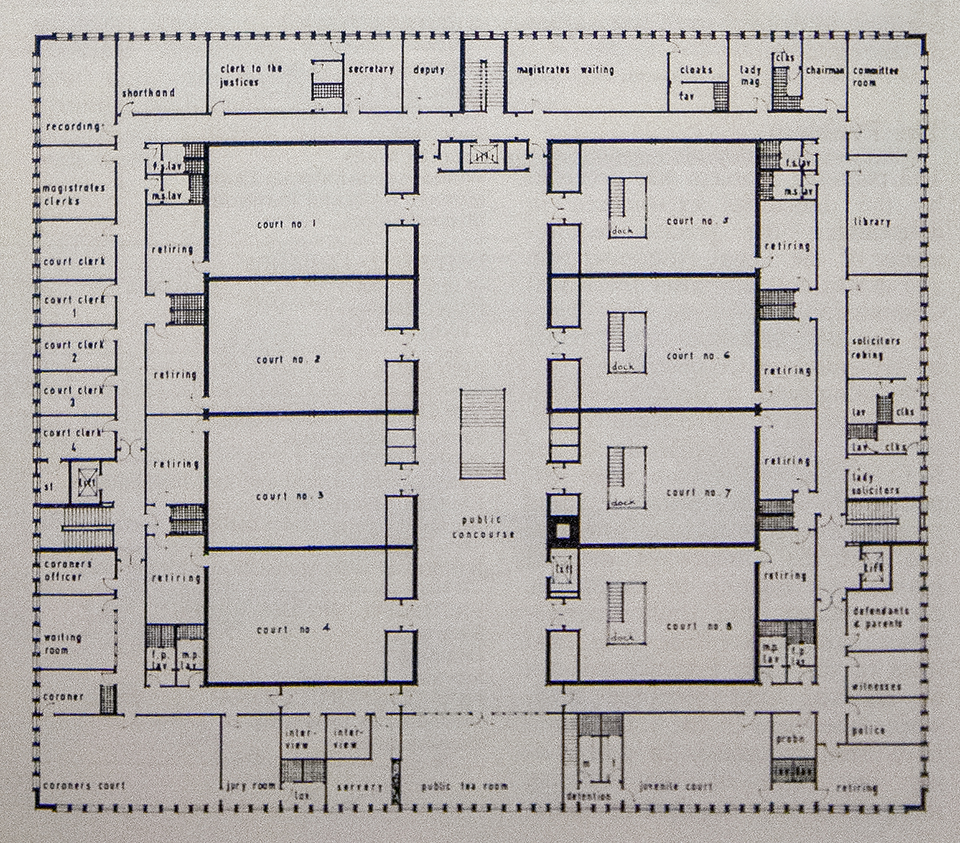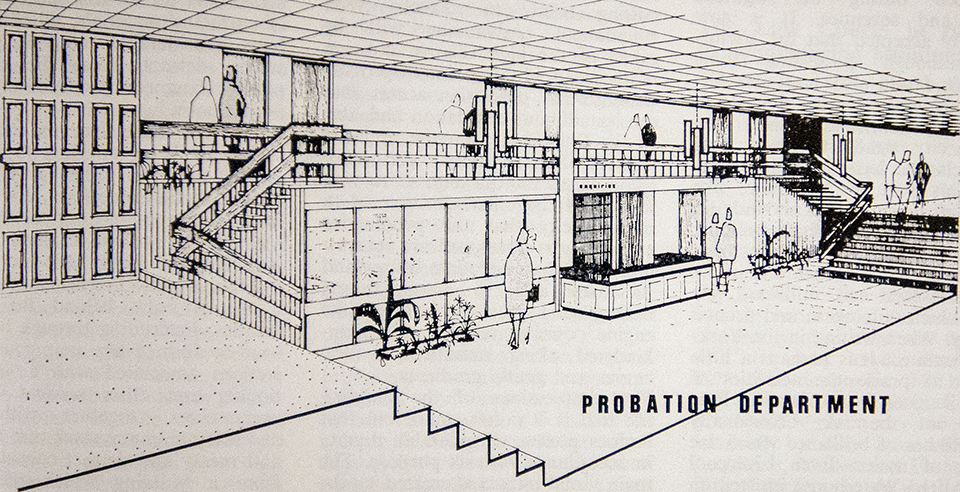Magistrates' Courts
1972
The opening of the Law Courts and adjacent Police Station (demolished 200x) in Bradford in June 1972 heralded the cessation of a strange decree where, for the 15 years prior, the late City Planning Officer insisted on the use of Portland stone in a city built from Yorkshire sandstone and gritstone (see Bradford City Library and Arndale House). The scheme formed part of a civic precinct planned in the 1950s and its completion roughly coincided with the implementation of the local government reform of the early 1970s. Set perpendicular to the City Hall (Lockwood and Mawson, 1873), the low serrated profile of the courts sit within one of the few level areas of the city centre, its rear tucked into the rising ground to the south. It now forms one edge of City Park (Gillespies, 2012) that grew from Will Alsop’s 2003 masterplan. The largely symmetrical elevation to the city centre is without decoration, visual interest is created by the arrhythmic order of wide and narrow windows set between the stone-faced cladding panels on the slightly cantilevered first floor. Elsewhere, a judicious palette of dark tiles, white mosaic, exposed aggregate panels, rubble walls, granite setts and a terrazzo plinth exhibit a veritable smorgasbord of material selection that was probably quite jarring when shiny and new, but has aged to be relatively cohesive. Minutes show that durability and a balance between indigenous and modern character informed this selection, though the eclecticism may also be down to changes in the design team during the development and construction phases – Owen Perry succeeded W.E. Brown as City Architect c.1970 and Assistant City Architect Kenneth Warman was replaced by James Ellis in 1969. [1] Internally, the material extravagance of the local authority architects was not abated, a pink terrazzo staircase ‘which would not have looked out of place in the palace of the Queen of Sheba’, led to the main concourse hosting an aluminium sculpture by Austin Wright. [2] The eight courts are central to the plan and arranged along the long axis of the public concourse. Cellular spaces containing clerks’ offices and waiting rooms flank the perimeter of the plan. A coroner’s court and juvenile court are smaller rooms and sit at first floor above the main entrance area. Most commentators acknowledge the ‘civic dignity’ of the scheme.
[1] James Ellis, ‘City of Bradford Law Courts’, Yorkshire Architect, no.26, September 1972, p.558
[2] John Ayres, ‘Order in Bradford’, Yorkshire Architect, no.26, September 1972, p.560
